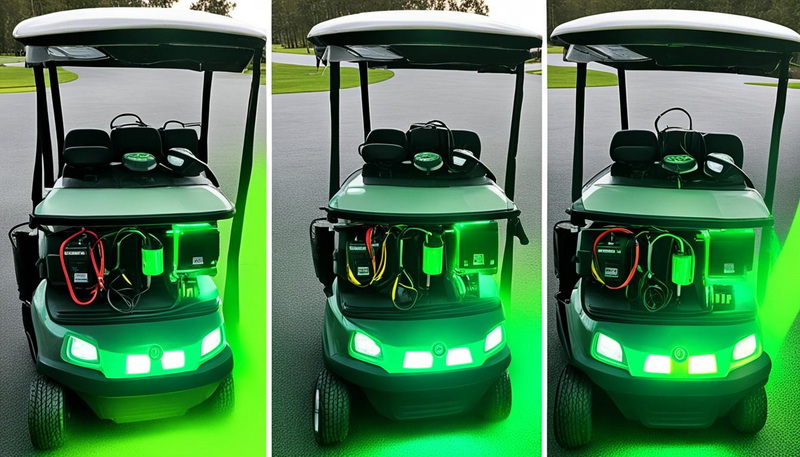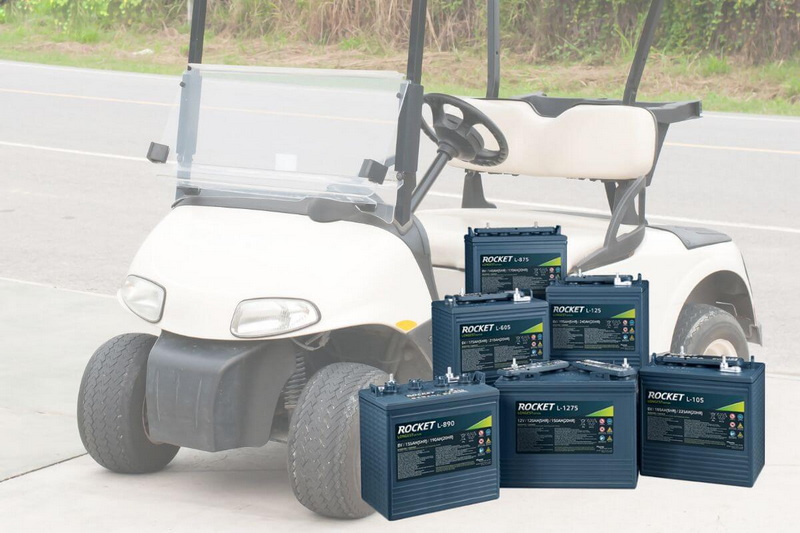Content Menu
● Understanding Electric Golf Cart Batteries
>> Types of Batteries Used in Golf Carts
>> Average Lifespan of Electric Golf Cart Batteries
>> Maximizing Battery Lifespan
>> Signs of Battery Failure
>> Cost Considerations
>> Conclusion
>> Frequently Asked Questions
>>> 1. How often should I replace my golf cart battery?
>>> 2. What are the signs that my golf cart battery is failing?
>>> 3. Can I extend the life of my golf cart battery?
>>> 4. What is the difference between lead-acid and lithium batteries?
>>> 5. How far can I expect to drive on a single charge?
Understanding Electric Golf Cart Batteries
Electric golf carts have become increasingly popular due to their eco-friendliness and convenience on the golf course. Understanding the lifespan of these batteries is essential for maintaining the optimal functionality of the golf cart.

Types of Batteries Used in Golf Carts
Electric golf carts typically use two main types of batteries: lead-acid batteries and lithium-ion batteries.
- Lead-Acid Batteries: These are the most common type found in golf carts. They are generally less expensive but have a shorter lifespan, typically lasting between 4 to 6 years with proper maintenance. They require regular watering and can be sensitive to deep discharges.
- Lithium-Ion Batteries: These batteries are becoming more popular due to their longer lifespan, which can range from 8 to 10 years or more. They are lighter, charge faster, and require less maintenance compared to lead-acid batteries. However, they come at a higher initial cost.
Average Lifespan of Electric Golf Cart Batteries
On average, electric golf cart batteries last between 4 to 6 years. However, several factors can influence this lifespan:
- Usage Frequency: The more frequently a golf cart is used, the shorter the battery life may be. Regular use can lead to quicker wear and tear.
- Maintenance Practices: Proper maintenance can significantly extend battery life. This includes regular charging, cleaning terminals, and ensuring water levels are adequate in lead-acid batteries.
- Environmental Conditions: Extreme temperatures can affect battery performance. Batteries tend to perform poorly in very hot or very cold conditions.

Maximizing Battery Lifespan
To ensure your golf cart battery lasts as long as possible, consider the following best practices:
- Regular Maintenance: Check battery water levels regularly and clean terminals to prevent corrosion.
- Charging Techniques: Avoid letting the battery discharge completely before recharging. Ideally, charge the battery after each use to maintain optimal performance.
- Inspections: Regularly inspect the battery for any signs of wear or damage. Look for leaks, swelling, or corrosion.
Signs of Battery Failure
Recognizing the signs of battery failure can save you from being stranded on the course. Common indicators include:
- Decreased Performance: If the cart struggles to maintain speed or power, it may be time for a battery replacement.
- Frequent Charging: If you find yourself needing to charge the battery more often than usual, it could indicate that the battery is losing its capacity.
- Physical Damage: Any visible signs of damage, such as leaks or swelling, are clear indicators that the battery needs to be replaced.
Cost Considerations
When considering battery options, it's essential to weigh the initial costs against long-term savings. Lead-acid batteries are cheaper upfront but may require more frequent replacements. In contrast, while lithium-ion batteries are more expensive, their longevity and lower maintenance needs can lead to savings over time.
Conclusion
Understanding the lifespan and maintenance of electric golf cart batteries is crucial for any golf cart owner. By choosing the right battery type and following best practices for care, you can maximize your investment and enjoy many years of reliable service from your golf cart.

Frequently Asked Questions
1. How often should I replace my golf cart battery?
Typically, golf cart batteries should be replaced every 4 to 6 years for lead-acid batteries and every 8 to 10 years for lithium-ion batteries, depending on usage and maintenance.
2. What are the signs that my golf cart battery is failing?
Common signs include decreased performance, frequent charging needs, and visible physical damage such as leaks or swelling.
3. Can I extend the life of my golf cart battery?
Yes, regular maintenance, proper charging practices, and avoiding deep discharges can significantly extend battery life.
4. What is the difference between lead-acid and lithium batteries?
Lead-acid batteries are cheaper but have a shorter lifespan and require more maintenance, while lithium batteries are more expensive but last longer and require less care.
5. How far can I expect to drive on a single charge?
Most electric golf carts can travel between 25 to 40 miles on a single charge, depending on the battery type and conditions.










































